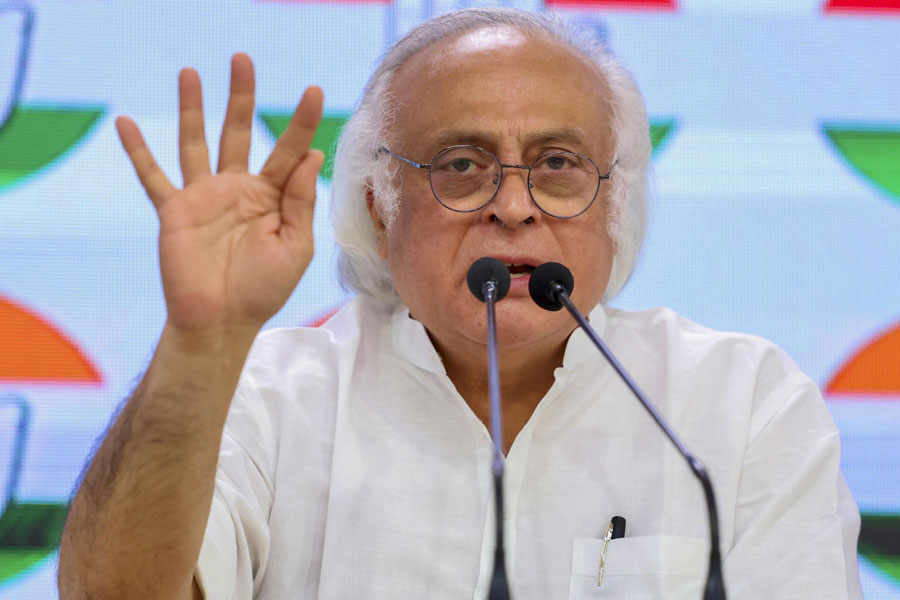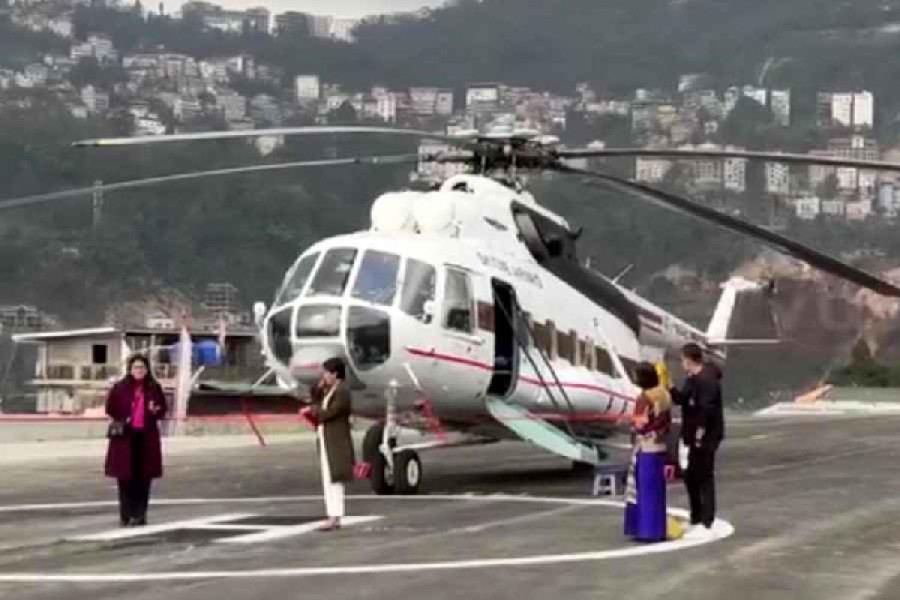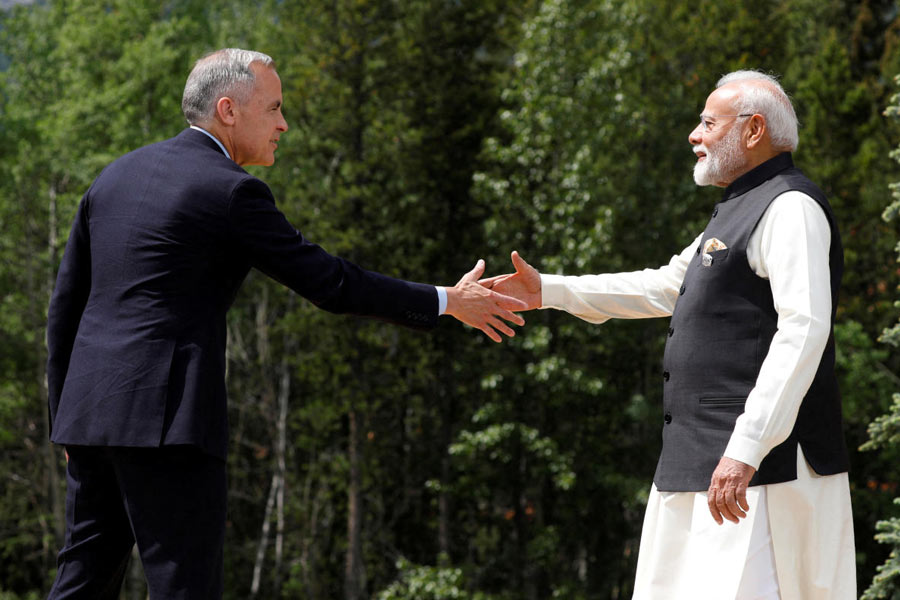|
|
| Channel spouted jar, Mangalkot |
AN ANNOTATED ARCHAEOLOGICAL ATLAS OF WEST BENGAL: VOLUME 1: PREHISTORY AND PROTOHISTORY,
Edited by B.D. Chattopadhyaya, Gautam Sengupta and Sambhu Chakrabarty,
Manohar, Rs 2,000
This atlas is the first of a series of many more planned. The objective is to record the heritage locations of West Bengal as represented by archaeological sites and excavations. This volume deals with the prehistory and proto-history of West Bengal. The locations have been shown on maps, as well as in the form of an index with the bearings of most sites given in terms of latitude and longitude. Some sites have not been plotted on maps, and their locational bearings have also been excluded for unstated reasons.
Fortunately, a very large number of sites have been located. These have been broadly grouped in terms of the artefacts made and used by the ancient societies, each with its cultural distinctiveness such as palaeolithic, micro-lithic, neolithic, black and red ware, and copper hoards. These are the classifications that archaeologists use to suggest some order in the evolution of culture.
These artefacts include tools, utensils, ornaments, weapons, remains of bones and fossilized wood. In many instances, photographs of the artefacts have been included to let the reader appreciate their shape-related attributes. This is a standard practice in archaeological treatises. The maps show the locations of each group of deposited artefacts.
The atlas appears attractive and clearly distinctive for the maps showing the drainage systems and the regional variations of land surface in terms of geology, land forms (physiography) and the current processes responsible for sculpturing the land forms (geomorphology) classified in their distribution over West Bengal. These maps have obviously been drawn by scholars of different sub-disciplines of various field sciences. This could stimulate field scientists of other disciplines to discover many facets of the relationship that the habitations had with one or another feature of physical landscape, provided, of course , they have a discerning eye. Apparently, the authors had in mind a grand design for an atlas of this kind.
Assuming that this was their objective, I would like to suggest some means to improve the quality of the atlas in the next edition. Let me start with the most mundane observation. It is a custom among map-makers to place an index in order to reveal the meanings of symbols used. In one particular map, with the title “West Bengal: Geomorphology”, the symbol used for “Low lying present day flood plain” in the index has not appeared in the map. The reason is that the colour used in the index and the one on the map do not match. Another mentionable mistake concerns the location of Jamboni. A very important settlement bearing the name of Jamboni is the site of a police station, located to the west of Jhargram and east-by-southeast of Parihati. The location shown in the map coincides with the settlement used as a site for the Binpur police station. A clarification is obviously required in this case.
My second observation is that the sources of the materials used to fabricate the artefacts need to be disclosed. The materials obviously came from geological formations like granite, basalt, quartzite, sandstone, copper, clay and so on. This can be amended easily with the help of a competent geologist who may also be of help in identifying the possible locations of the diverse sources. This would have helped interpret the capabilities of the ancient societies by extracting resources from the physical landscape, which is the repository of such resources for all societies in all historical periods.
Perhaps an example would bring out the importance of this issue. The map on page 106 shows the locations of the sites of copper hoards. One notices the total absence of copper hoards sites north of the Damodar river. All such sites are located south of the river. A significant number of such sites, such as Tamajuri, Akuldoba, Parihat and Jamboni, are located close to the Dalma-Dhanjory subduction zone, which contains a variety of base metals, copper being an important constituent. A geologist can explain to the archaeologist the mineralogical significance of a zone of subduction. I had noticed specs of oxidized copper and zinc in the petrology of this area. A question, therefore, emerges from such a connection between the location of mineralogical formations and the sites that show the use of the same metal, which is on the manner of extraction used by the given ancient society.
The locations of other sites, such as Perua near Panskura, Aguibani in the middle section of the Silabati river or Kushadwip on the crest of the valleys of the Dwarakeswar and Damodar rivers, point towards another question. This is on the role of trading in shipments of useful materials, bearing in mind that trade originated many centuries ago, long before the current phase of globalization. One may note that these sites are all located on the remnants of a more continuous landform and placed almost on the same elevation, which is currently being sculpted by rivers like the Kaliaghai, Dulung, Taraphini, Bhairabbanki, Kangsabati, Silabati and Dwarekeswar. Travelling on such a surface would have been easy.
A similar idea is generated by the fact that the majority of the sites containing black and red wares are associated with the tracts known to have existed in the most ancient period of our geological history. These geologic formations (gneiss and granite) contain pockets of kaolinitic-clay, formed by acidic hot water, which had leached out potash from feldspar. This clay is still used in that region. The terracotta tiles on the temples in Vishnupur are made of this material. Similar tenacious clay is not found near the river channels, as conjectured by the editors. If the nature of clay used in these wares was known, then the possible existence of a link between geological resources and the place of use could be verified. If such links existed, one could conjecture that these ancient people knew the technique of digging up the clay from variable depths. Such ties, if established, would have provided more comprehensive statements on the techno-culture of these social groups.
I am not stating all this to demean the work. The editors have done an excellent job. Discerning social scientists, helped a bit by field scientists, would find in it a lot of potential hypotheses on our heritage.











